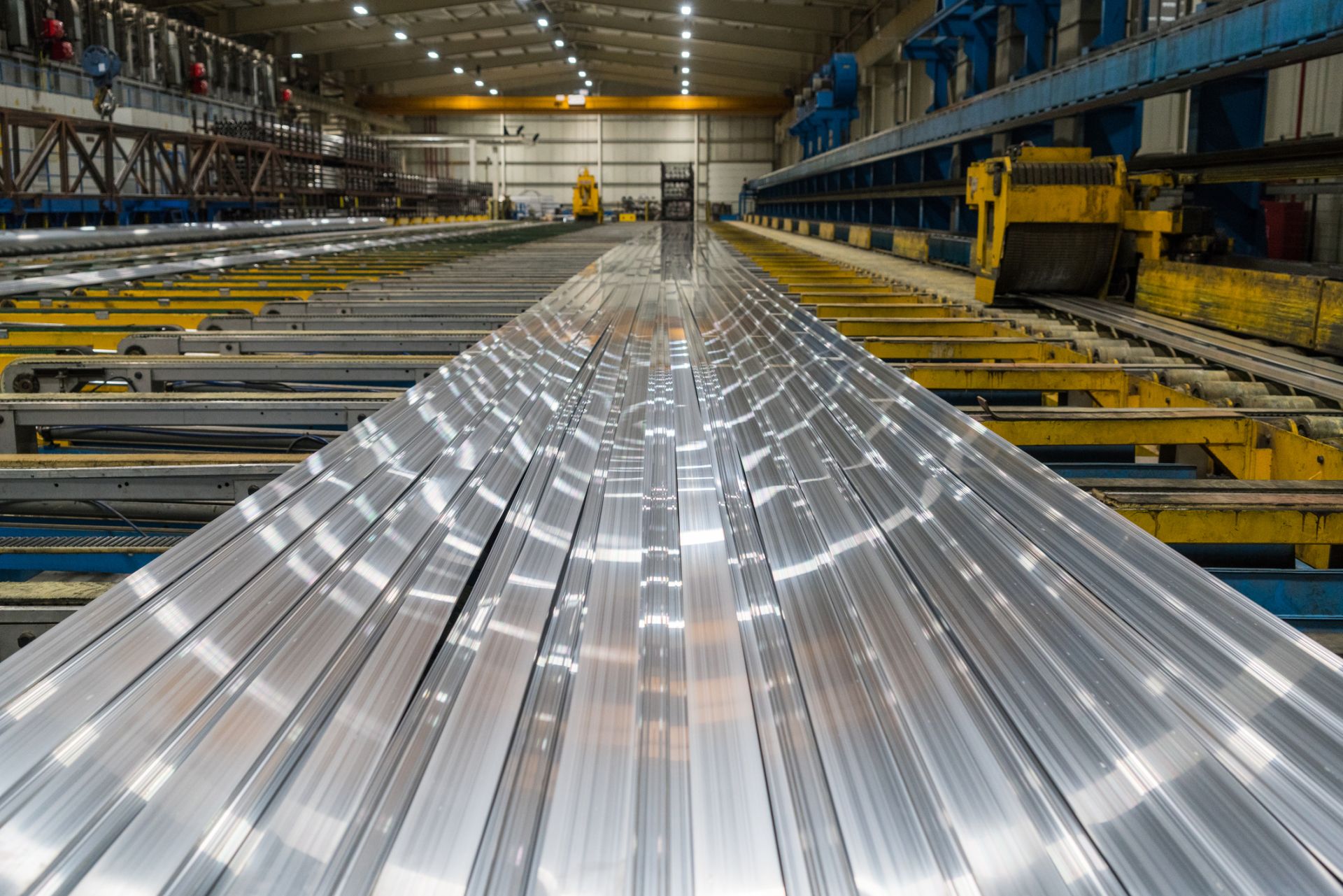When considering working and manufacturing with metals, particularly with aluminum, the first thoughts are centered on the heating process with hot furnaces where the metal is heated to extremely high temperatures and then wrought or cast into form.
However, there is another type of process to strengthen the metal that involves adding other alloys to pure aluminum and then working the metal without using heat. This method is called cold working.
How is Cold Working Performed?
Cold working is done to create vacancies and dislocations in the structure of the aluminum and alloying element. These deformations cause permanent defects in the crystalline makeup of the material by inhibiting movement made by the atoms. Once the atoms cannot move, the alloy actually increases in strength because it is resistant to further deformation. While the aluminum increases in strength and hardness, it does lose some ductility.
Cold forming is performed through several different forging and rolling methods. The methods can involve squeezing, bending, shearing and drawing the aluminum alloy. One of the most common ways to harden aluminum is through cold rolling as the metal is reduced in thickness by being passed through rollers while being compressed. A second method is called drawing. Drawing is where the aluminum alloy is pulled through a small die until its diameter is reduced. A third method involves bending as the aluminum’s geometry is changed by deforming the alloy over a work axis. So the aluminum alloy becomes strengthened without changing the volume of the metal as instead the shape of the aluminum is changed.
Alloying Elements Added for Cold Working
Manganese, silicon and magnesium are the three alloy elements that will be added to aluminum to create a strong metal that has good workability, weldability and corrosion resistance. In addition, by adding certain elements, such as silicon, during the cold working process, it allows the aluminum to become strong without becoming brittle.
Like heat treatable aluminum alloys, cold working aluminum alloys will be placed within certain series designations based on the type of alloying element that was added and the characteristics that the metal has. The three series are 3xxx, 4xxx and 5xxx.
3xxx series: Manganese is the alloying element that is placed into the aluminum, and sometimes small parts of magnesium is also added. The resulting aluminum alloy will have moderate strength as it will be used in general purpose applications such as beverage cans, heat exchangers, architectural applications, and cooking utensils.
4xxx series: Silicon is added to the aluminum as it lowers the aluminum’s melting point. The alloying metal offers fantastic weldability without leading to brittleness. Aluminum alloys in this series are used as brazing alloys, welding wire, and in automotive applications.
5xxx series: Magnesium is the most common element added to aluminum to make a high strength and corrosion resistant metal alloy. This element is widely used in the manufacturing industry due to its versatility. Aluminum alloy in the 5xxx series can be made into marine applications, construction projects, buildings, and storage tanks.
New aluminum alloy compositions and designations are constantly being added to provide manufacturers with a range of options when using aluminum alloys to create products. Since every aluminum alloy has its own unique benefits and characteristics, it is always advisable to speak with an alloy manufacturer who can supply more technical information that will allow you to make the right decision when purchasing aluminum and alloying metals.
Then you will be able to decide on the right metals to use in your manufacturing operations.
Here at Belmont Metals, we have a wide selection of master alloys, including aluminum, that manufacturers in varying industries desire.


